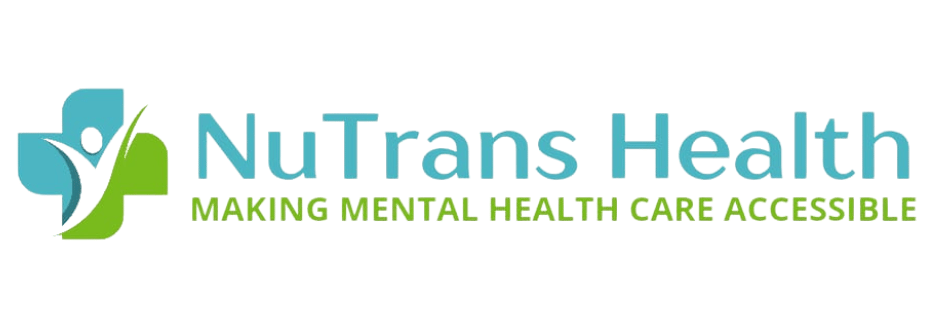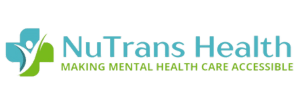What to Expect in Your First Month
In your first month of outpatient anxiety treatment, you'll go through a structured process that includes:
Week 1: Assessment and Plan
You’ll start with a thorough assessment: clinical interview, screening questionnaires, medical and treatment history, and your personal goals. Together with your clinician, you’ll create a clear plan that outlines the therapy approach, session frequency, home practice, and whether a medication consult makes sense.
Weeks 2–3: Skill Building and Exposure
You’ll learn core CBT and ACT skills such as noticing worry loops, reframing unhelpful thoughts, and regulating your body’s stress response. If appropriate, you’ll begin graded exposure tasks, both in session and at home, to gently retrain your brain’s alarm system. If you are taking medication, your prescriber may make small, data-driven adjustments.
Week 4: Consolidation
You and your clinician will review symptom measures, reflect on what helped most, and fine-tune the plan. You’ll set targeted goals for the next month and create strategies for known triggers such as exams, travel, or busy seasons at work.
Typical timeline:
Many people notice relief
within two to six weeks, especially after exposures begin. A common
course for meaningful, sustained change is eight to sixteen weeks, with
occasional booster sessions afterward.
Telehealth vs. In-Person
Telehealth
- Convenient for busy schedules and those with limited access to care.
- Works well for CBT, medication management, and many exposure tasks that can be practiced in real-world settings at home or in the community.
- Best if you have a private, quiet space and a stable internet connection.
In-Person
- Helpful when you want hands-on coaching for exposures or if privacy at home is limited.
- Useful for complex phobias or when clinic resources make practice easier and safer.
Hybrid Care
Many programs combine both so you can get the flexibility of telehealth and the depth of occasional in-person sessions..
Costs, Coverage, and How to Plan
Get a clear picture of what you’ll pay and what your insurance will cover before you start.
If You’re Using Insurance
- Covered services: Many plans include Outpatient (OP), Intensive Outpatient (IOP), and Partial Hospitalization (PHP).
- Call your benefits line: Ask about in-network providers, copay or coinsurance, deductible status, session limits, and your out-of-pocket maximum.
- Prior authorization: Confirm whether OP, IOP, or PHP requires preapproval and who submits it.
- Telehealth details: Check parity for telehealth, coverage for group sessions, and separate billing rules for medication visits.
If You’re Paying Privately
- Session-based pricing: Most clinics bill per session; some offer bundles or packages that reduce the per-visit cost.
- Sliding scale: Ask about income-based rates or payment plans if cost is a barrier.
- HSAs/FSAs: Anxiety treatment is typically eligible for HSA/FSA funds.
Out-of-Network and Reimbursement
- Superbills: If your clinician is out of network, request a superbill to submit to your insurer for possible partial reimbursement.
- Documentation: Keep itemized receipts and note diagnosis codes if your insurer requires them.
Policies to Review Up Front
- Cancellation and no-show policies and any fees
- Medication management billing if you see a prescriber
- Late payment terms and refund policies for packages
Smart Questions to Ask Your Clinic
- What will my copay or coinsurance be per session?
- Do I need prior authorization for OP, IOP, or PHP?
- Are telehealth and group sessions covered the same as in-person?
- How are medication visits billed compared with therapy?
- Do you provide superbills for out-of-network reimbursement?
How to Choose a High-Quality Outpatient Program (Checklist)
Core Standards
- Evidence-based care: CBT, ERP, ACT, measurement-based adjustments.
- Specialization: Specific track for your diagnosis (e.g., OCD, panic, social anxiety).
- Qualified team: Licensed therapists with anxiety/ERP training; psychiatric support available.
- Structured curriculum: Clear session plans, exposures, skills groups.
- Family/partner involvement (optional): Helpful for accommodation reduction.
- Outcome tracking: Uses standardized tools and shares progress with you.
- Step-up/step-down options: Smooth transitions between OP, IOP, and PHP.
Red flags
- Vague “talk therapy” with no plan or homework.
- Guaranteed cures, minimal assessment, or heavy reliance on benzodiazepines.
- No exposure work for conditions that warrant it (e.g., OCD/panic).
How Outpatient Care Helps Specific Anxiety Problems
Outpatient programs match proven methods to each diagnosis, then scale the intensity (OP, IOP, PHP) to fit impairment and goals.
Generalized Anxiety Disorder (GAD)
Primary approach: CBT.
Focus: mapping worry cycles, cognitive restructuring, problem-solving, relaxation training, and sleep protocols (CBT-I when needed).
Panic Disorder (with or without agoraphobia)
Primary approach: interoceptive and situational exposure.
Focus: education about the panic cycle, deliberate practice with feared body sensations, and graded community exposures to reclaim avoided places.
Social Anxiety Disorder
Primary approach: CBT with behavioral experiments.
Focus: social exposures (in session and real-world), belief testing, and skills for attention shifting and post-event rumination reduction.
Specific Phobias
Primary approach: systematic in-vivo exposure.
Focus: stepwise practice with the feared stimulus (e.g., flying, heights, needles) until anxiety drops and avoidance loses its grip.
Obsessive-Compulsive Disorder (OCD)
Primary approach: Exposure and Response Prevention (ERP).
Focus: confronting obsessions while withholding compulsions, supported by psychoeducation; consider SSRI augmentation when indicated.
Health Anxiety (Illness Anxiety)
Primary approach: CBT with exposure to uncertainty.
Focus: reducing reassurance seeking and checking, practicing balanced health behaviors, and building tolerance for ambiguity.
Post-Traumatic Stress Disorder (PTSD)
Primary approach: trauma-focused therapies (PE, CPT, trauma-focused CBT).
Focus: memory processing and in-vivo exposures to safe but avoided cues; assess need for higher care when dissociation, safety concerns, or severe comorbidity emerge.
Treatment is personalized. Many clients have overlapping symptoms, so clinicians blend methods (e.g., ERP plus ACT skills) and adjust intensity over time based on progress measures.
Practical tips to get more from outpatient treatment
Maximize your progress with these practical strategies to stay engaged and on track.
Commit to Homework
Exposures and skills practice are the core of progress. Consistent work between sessions accelerates change.
Stick to a Consistent Schedule
Regular session days and times reduce procrastination and help make treatment a habit. Consistency also decreases the chances of avoidance.
Track Your Progress
Log exposures, anxiety ratings, successes, and setbacks. Monitoring progress helps you stay focused and adjust as needed.
Involve Support
Bring in a coach, partner, or family member. Their involvement can help challenge any well-meaning accommodations that might be holding you back.
Expect Ups and Downs
Recovery isn’t always a straight line. Celebrate the small wins, and remember that setbacks are part of the process. Perseverance builds resilience.
Frequently Asked Questions
How quickly will I feel better?
Many notice improvements within 2–6 weeks, especially once exposures start. Deeper change builds across 8–16 weeks.
Do I need medication?
Not always. Many recover with therapy alone. For moderate to severe symptoms, combining therapy with SSRIs/SNRIs can help.
Is exposure therapy safe?
Yes. Exposures are gradual and collaborative, challenging but controlled, never harmful.
What if my anxiety spikes between sessions?
That’s expected as you face fears. Your therapist will teach skills and set a plan for between-session support.
Can I do this while working full-time?
Yes. Standard OP fits most schedules; IOPs often offer evening or telehealth tracks.
What if I “fail” an exposure?
There’s no failure—only data. We learn, adjust, and try again. Repetition builds confidence.
How will I know I’m done?
When anxiety is no longer running your calendar. You’re doing things you used to avoid, and symptoms are manageable. Many schedule booster sessions during stressful seasons.
Sample Weekly Plan (IOP Example)
Monday
- Psychoeducation + Skills Group (CBT/ACT) Begin the week by gaining valuable knowledge on managing anxiety and learning key coping skills. The focus will be on understanding your thoughts and behaviors, and how to shift them for better mental health.
Wednesday
- ERP Group + Individual Session Delve deeper into exposure therapy, gradually facing your fears in a supportive group environment. One-on-one sessions allow for personalized guidance to ensure progress and tackle specific triggers.
Friday
- Medication Check + Relapse Prevention Take time to review your medication, assess its effectiveness, and discuss any side effects. Learn practical strategies for relapse prevention to help you maintain long-term success and resilience.
Daily
- At-Home Exposure Practice (10-20 minutes) Engage in daily exposure exercises that challenge your anxiety, track progress, and build new, healthier habits. This consistent practice helps reinforce the skills learned in therapy and accelerates recovery.
Outpatient anxiety treatment works and it works while you keep living your life. With structured, evidence-based therapy (often enhanced by medication), most people gain control over symptoms, rebuild routines, and reclaim what anxiety has crowded out.
Take Back Control of Your Life with NuTrans Health
At NuTrans Health, we offer outpatient anxiety treatment through our Mental Health Counseling Services designed to fit effortlessly into your daily life. Our personalized, evidence-based therapies empower you to manage symptoms, regain control, and rebuild the life that anxiety has overshadowed.
Our platform makes it easy by connecting you with best therapists and psychiatrists who accept your insurance, ensuring healthcare is more accessible and stress-free.


